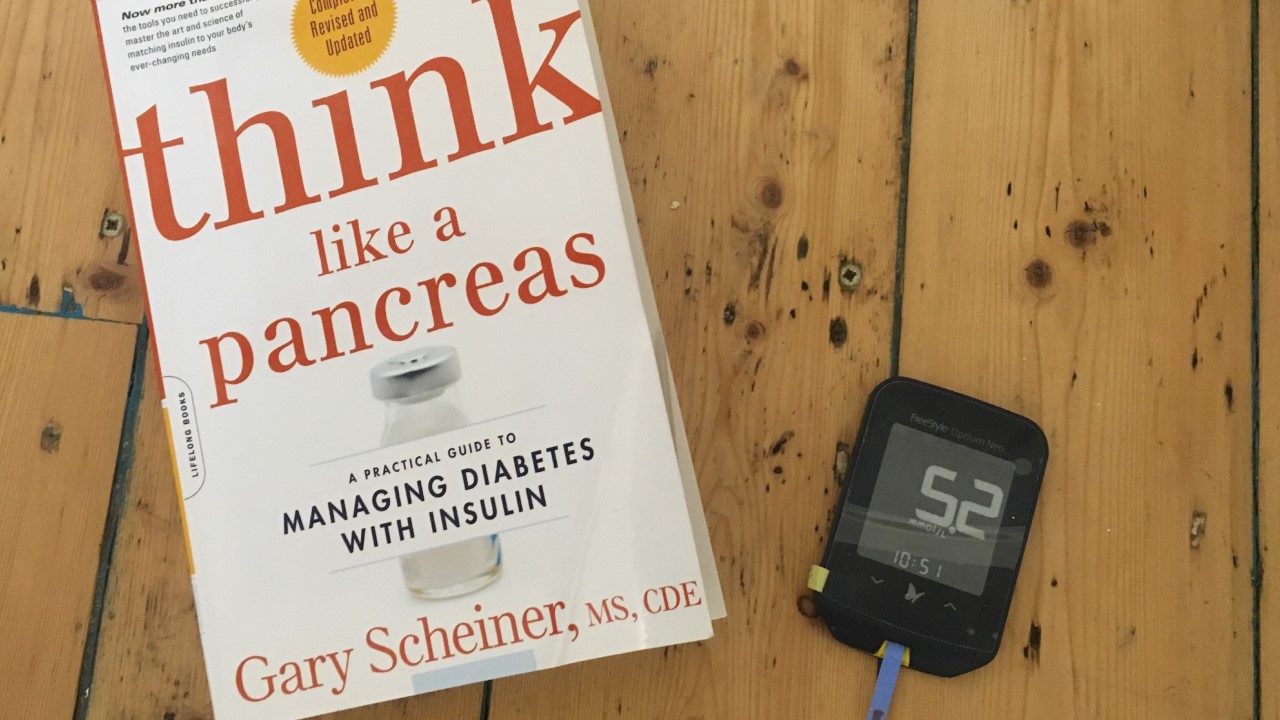
 Think Like a Pancreas is a book I’ve been wanting to read for a while, when I finally got around to buying it I read it in one week and decided to write a book review for you. From the moment I picked up this book, I knew I would get through it quite quickly because of how the author, Gary Scheiner, breaks down the medical jargon into a vocabulary that is easy to read and relatable. What’s more, he is type 1 diabetic himself which makes me automatically pay more attention. Mainly because of how he uses experiences of own to express his point. Sure, there are times when he does delve deeper into a language that makes me want to fall to sleep, but he somehow ties it in with some humour and I was instantly drawn back in.
Think Like a Pancreas is a book I’ve been wanting to read for a while, when I finally got around to buying it I read it in one week and decided to write a book review for you. From the moment I picked up this book, I knew I would get through it quite quickly because of how the author, Gary Scheiner, breaks down the medical jargon into a vocabulary that is easy to read and relatable. What’s more, he is type 1 diabetic himself which makes me automatically pay more attention. Mainly because of how he uses experiences of own to express his point. Sure, there are times when he does delve deeper into a language that makes me want to fall to sleep, but he somehow ties it in with some humour and I was instantly drawn back in.
Without giving all of the details of the book away, I will share what I took away from the book. The first and foremost thing that drew me in was how brutally honest Scheiner was about what could happen if you don’t take care of your diabetes. I saw this as a motivator and it prompted me to consider how well I am taking care of myself.
Straight after the negatives, he talks about the positives of good glucose control. I was relieved to read about how an even tighter control could improve overall mood and sense of wellbeing. This point resonated with me because of how low mood and irritability are the first things I notice when my blood sugars have been on a roller coaster ride.
Being on pump therapy, I am clearly aware of a basal / bolus routine. However, throughout the book, I was reminded of all of the reasons why one should be following a basal / bolus routine and why fine tuning is important. He is inclusive to those who take multiple daily injections or those who use an insulin pump. He then offers efficient ways of testing basal / bolus doses to ensure they are correct for you.
In terms of dietary needs and aside from the obvious kind of healthy diet we should follow, Scheiner illuminated the effects that protein can have on the blood sugar if consumed without carbohydrate. Basically, if you eat protein with carbs, you won’t have to bolus for it, but if you eat protein without carbs, such as a protein shake, you will have to administer a small bolus for it. To calculate this bolus… if I was having a scoop of protein that contained 20 grams of protein, 2 grams of carbs and 0.2 grams of fat, it was suggested to take the total amount of protein, half it and then take a bolus as if it were a source of carbs. Thus, 20/2=10protein = 10grams carbs. – This was significant for me as I sometimes eat sources of protein that contain minimal carbs or fat.
Later, he explores the details of how to prevent spikes in the blood sugar by manipulating bolus of food timings. I was already familiar with a lot of the points made, but they were still very relevant and useful. They will be worthwhile to you too if you enjoy carbs as much as I do. Trust me, I tried the low carb life and I was miserable. I feel much stronger and more energetic when I have carbs in m life, even if they cause the occasional spikes.
Have you read this book? What did you take from it? I will definitely look at this book again if I ever have any questions because of the range of topics covered that pertain to living with diabetes on a day to day basis. Reading this book made me realise how little discourse there is surrounding the “everyday” life of a diabetic. I mean, I really do acknowledge and appreciate the researchers who focus on the medical scientific part of diabetes, but I think there should be a few more qualitative studies that could highlight areas surrounding mood, motivation to control diabetes or how living with diabetes may or may not affect relationships etc.
I hope you’re having a great start to the new year of 2018. I’d love to connect with you on Twitter, Instagram and Youtube.
Rowena x